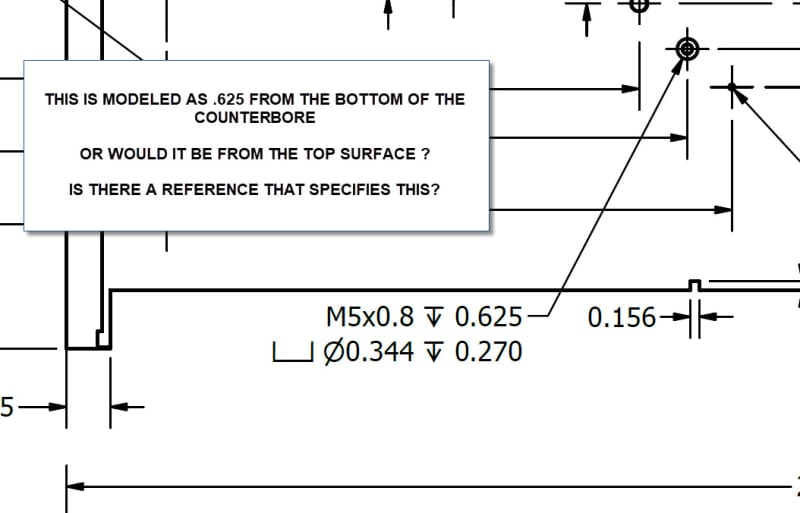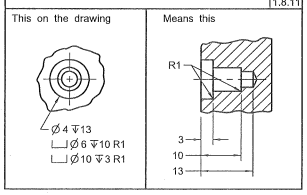A few comments related to what has already been stated.
NAS523 standard fastener codes, and my company... for planform views only with standard mechanical fasteners only... have a variety of codes that specify aspects of installation... such as head on the 'N' [near side] or 'F' [far side].
HOWEVER in structural an mechanical installs... with unique criteria such as You have expressed... appropriate dimensioned section views, at standard orientations are shown. Likewise the use of 'line conventions' [solid, broken, phantom, center, etc] prevail... and may be augmented with descriptive flag notes...
NOTE1. USA standard drawing practices and nomenclature prevail [for many of us]... unless otherwise specified. However, for every drawing system [in-country or in a company] there has-to-be definitive documentation that You should reference and work-in-accordance with. Start with ASME Y14.100... for summary of practices... and listing of all related drawing 'sub-practices' [~40 as I recall].
NOTE2. It appears You are converting at 2D CAD drawing to a 3D CAD model-based drawing. Until You become more experienced in the conversion process... and as good practice otherwise... always try to validate all features against a 'real-world' [tangible] part.
PS1. My aircraft has thousands of ancient 'velum' hand-drafted drawings, which represent a real challenge to convert to 3D CAD models for new production parts. Drives designer's crazy. I had one particular designer who trying to model a light-weight sheet-metal flap with 3D CAD precision. They couldn't get the exceptionally slight [~0.20-deg] in/outboard skin contour tapers to match the sheet metal rib-flanges which were all set at 90.00-Deg. It was a challenge getting them to understand thin sheet metal design practices allowed for fit/offsets of +/-0.020-inches and angular miss-matches of +/-2-deg. The standing joke of 'beat[bend]-to-fit, paint-to-match' when right-over-their head.
Regards, Wil Taylor
o Trust - But Verify!
o We believe to be true what we prefer to be true. [Unknown]
o For those who believe, no proof is required; for those who cannot believe, no proof is possible. [variation,Stuart Chase]
o Unfortunately, in science what You 'believe' is irrelevant. ["Orion", Homebuiltairplanes.com forum]




